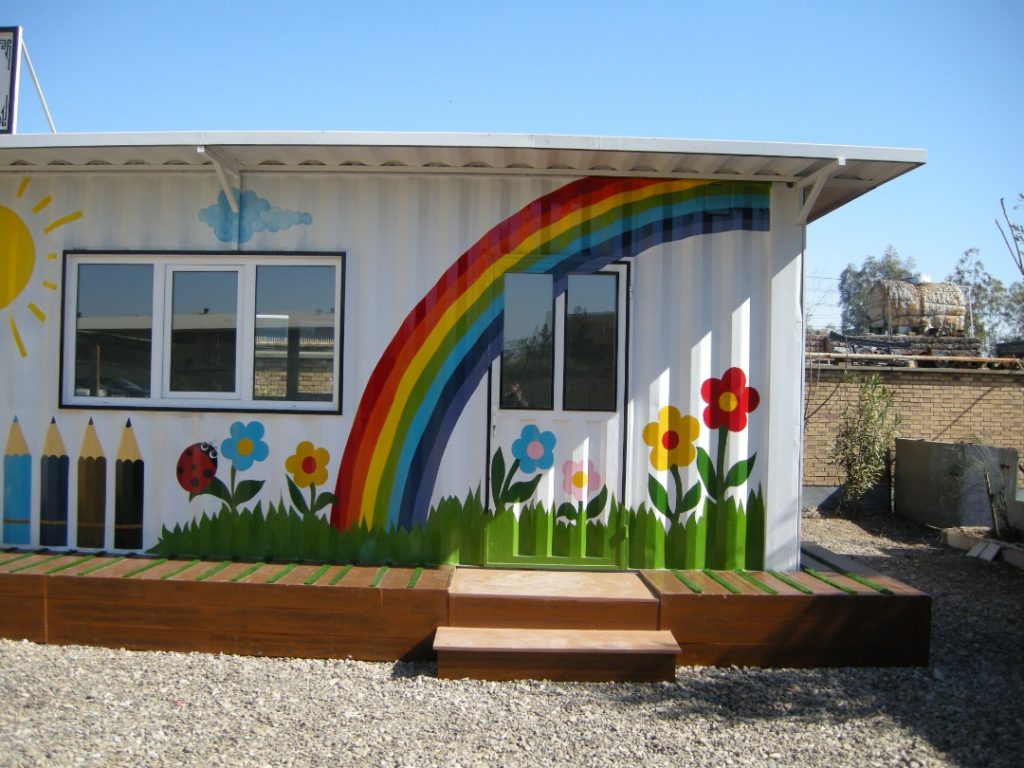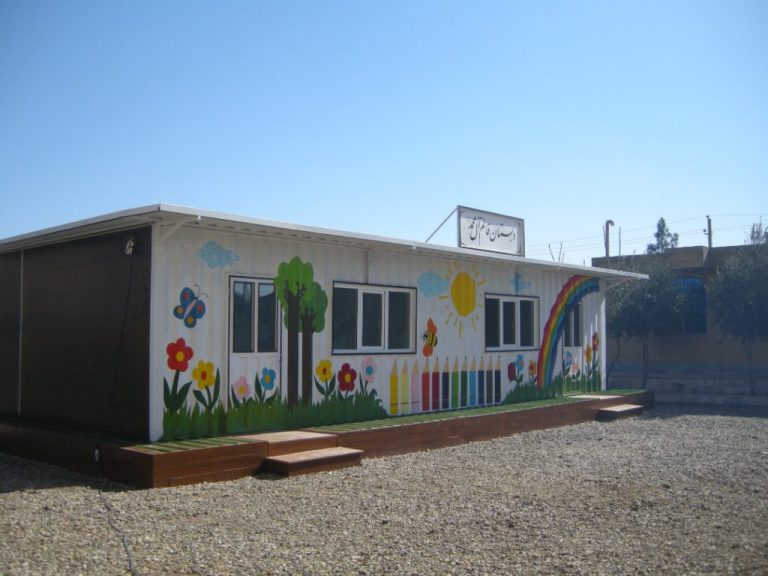Introduction:
Steel containers have been used for years to transport goods. After their useful life, they often end up abandoned in port yards and shipping companies. Reusing these containers as newsstands, emergency shelters, fire stations, barracks, military facilities, schools, apartments, office buildings, art studios, shopping centers, clinics, treatment centers, dormitories, restaurants, cafés, and other building structures serves the purpose of reducing waste and promoting green living.
Container Architecture is a type of architecture that utilizes steel shipping containers as the primary structural element. The use of containers as building structures has gained popularity in recent years due to their inherent strength, durability, and availability. Many houses are built using containers, as they offer better environmental compatibility compared to traditional building materials like cement and bricks.

Advantages of Container Structures in Brief:
Ideal Building Materials: Containers are known for their durability, compatibility, lightweight, and ease of transportation and installation.
Contribution to Recycling: Promotes an environment-friendly recycling process.
Simplicity and Ease of Construction: Containers offer simple and easy construction.
Efficient Insulation: Straightforward, precise, and proper insulation.
Resilience Against Harsh Weather: Containers can withstand various weather conditions, including hurricanes, tornadoes, and earthquakes. They can withstand winds of up to 160 km/h and even up to 250 km/h when properly anchored to a foundation.

Strength and Durability:
Transport containers are highly suitable building materials due to their robust design for heavy loads. They are designed to be stacked as tall columns, and their strength is enhanced by being designed for harsh environments, such as being placed on ocean-faring ships.
Modularity:
All transport containers have the same width and come in two standard sizes for height and length. This modularity allows these elements to be combined in larger structures, making design, planning, transportation, and assembling extremely straightforward. Adding structures becomes easy by stacking multiple containers together. When empty, containers can be stacked up to 12 units high.

Construction Costs:
Welding and cutting containers are specialized tasks that might increase construction costs, but they still remain less expensive than similar constructions like wooden structures.
Ease of Transportation:
Containers, as prefabricated structures, can be easily transported by ships, trucks, and trains due to their standardized dimensions.
Ease of Accessibility:
Transport containers are accessible worldwide, making them readily available for construction projects in various locations.
Foundation:
Containers form a simple structure with four columns located at each corner. The upper corners are stronger to bear the load from other containers. Therefore, when using containers as prefabricated structures, a simple foundation is needed at the corners of the containers.
Environmental Compatibility:
A 40-foot container weighs over 3500 kilograms. Recycling or reusing it saves thousands of kilograms of steel. Furthermore, during construction using containers, the use of traditional materials like bricks and cement is also reduced.

Drawbacks and Limitations of Containers:
Lack of Insulation:
Steel efficiently conducts heat. Containers used for habitation require better insulation compared to other structures like bricks or wood. This company addresses this issue by insulating container walls and roofs using materials such as rock wool or polyurethane.
Lack of Flexibility:
While containers can be easily combined to create larger spaces, creating custom spaces according to non-standard dimensions would require more time and expense, as it deviates from the standardized sizes.
Lack of Moisture Resistance:
In moderate climates, humid air can lead to steel corrosion. This company protects containers against corrosive factors by using special marine/cathodic protection coatings.
Need for Lifting Equipment:
To execute and install container structures, the use of cranes or lifting equipment is required.
Wooden Floor Treatment:
The floors of containers during manufacturing often contain insecticides. Before human habitation, these floors need to be treated for pest control or replaced with alternative materials. This company addresses this container weakness by providing comprehensive floor covering.
Weak Roof Structure:
While the two ends of a container are quite robust, the roof is not as strong and is recommended to have a weight limit of 300 kilograms.

